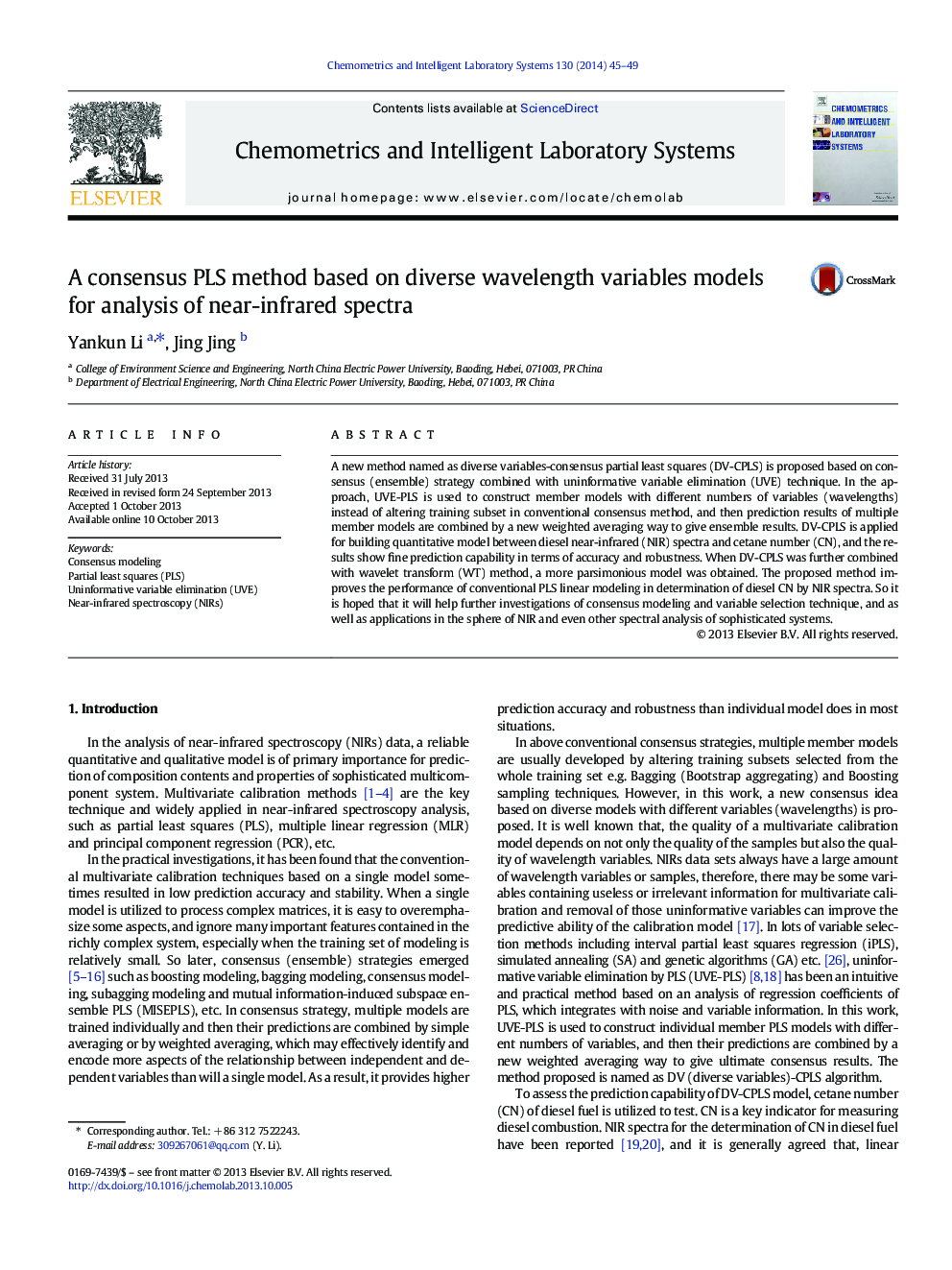| Article ID | Journal | Published Year | Pages | File Type |
|---|---|---|---|---|
| 1180666 | Chemometrics and Intelligent Laboratory Systems | 2014 | 5 Pages |
•A new consensus (ensemble) strategy based on wavelength variable selection.•The proposed method improves predictive ability of linear PLS on NIR spectra.•It is easy and possible to be extended to other spectral applications.
A new method named as diverse variables-consensus partial least squares (DV-CPLS) is proposed based on consensus (ensemble) strategy combined with uninformative variable elimination (UVE) technique. In the approach, UVE-PLS is used to construct member models with different numbers of variables (wavelengths) instead of altering training subset in conventional consensus method, and then prediction results of multiple member models are combined by a new weighted averaging way to give ensemble results. DV-CPLS is applied for building quantitative model between diesel near-infrared (NIR) spectra and cetane number (CN), and the results show fine prediction capability in terms of accuracy and robustness. When DV-CPLS was further combined with wavelet transform (WT) method, a more parsimonious model was obtained. The proposed method improves the performance of conventional PLS linear modeling in determination of diesel CN by NIR spectra. So it is hoped that it will help further investigations of consensus modeling and variable selection technique, and as well as applications in the sphere of NIR and even other spectral analysis of sophisticated systems.
